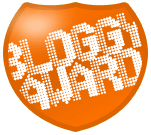Many of you are tech-savy and know more about computers than your teachers and parents. Yet an incredulous amount of pranks abound on the Internet, and an equally large number of you spread the pranks around with a dosage of presumed innocence (read: guilliility) and good intentions (stupidity). Issues 4 Girls N Boys gives you the low-dwn on e-hoaxes and such like
Ever read an e-mail about a bunch of ruthless people who'd slice off one's kidneys after drugging his drink? You know, the one in which the victim wakes up in an ice bath, only to see two cuts on his body and a lipstick-scrawled "Call emergency number 911" on his chest, wall or mirror? What about the one on HIV-infected needle syringes hidden in telephone booths (or beaches or movie seats, depending on your version)? Chances are you would also know about this little girl (who is dying of cancer) asking you to forward her message about life to your friends. Apparently, your good deed will enrich the coffers of "The National Cancer Foundation" (which one?) by 5 cents per e-mail or that Microsoft will donate 5 cents (how do they keep track) for every e-mail forwarded.
I've received various versions of these e-mails from different sources. What's amazing is that the same e-mail would come back to me after a pretty long interval. This shows that people are still circulating the e-mails, and some have even taken the trouble to insert authentic names and addresses to dupe the more gullible amongst us! It's easy to become paranoid from reading all these hoaxes. However, an e-mail hoax is still a hoax - it merely contains false information to trick you into thinking that it's genuine. It is your responsibility to stamp out such hoaxes by not forwarding them to your friends. But how do you tell a hoax from the real thing?
Recognising A Hoax
There are two factors that makes a hoax successful: technical sounding language and credibility by association. If the author uses proper technical jargon in his or her e-mail, most people (including those IT-savy ones) tend to believe it. One good example is this case of the "SULFNBK.EXE" virus warning, in which victims unwittingly deleted a file from their computers. As for "credibility by association", I am referring to the trustworthiness of the e-mail sender. If you had received the e-mail from a friend instead of a stranger, you would tend to believe it, won't you? Or if the e-mail had the name of someone from a well-known organisation, say Microsoft, you would be more inclined to trust its contents. However, even if such a person exists in the company, thr e-mail could still be a hoax. This is because the e-mail could have been sent by another person assuming his identity. And if there is no name or contact information of the original sender in the e-mail, you can be sure that it's a hoax. Sometimes, it can be hard to tell at first glance whether the claims made in the e-mail are real, and/or if the author of the e-mail is a real person. So what's the smart thing to do? If you want to forward the e-mail to your friends, the onus is on you to check the authencity of it. Otherwise, simply delete it and be indifferent.
Types Of Hoaxes
Here are some forms that hoaxes may take.
1) The Warning
These scream: "Beware of the Bullfrogeatcomputer Virus!" or its equivalent, and are almost always followed by a request for you to "warn everyone you know". Now, I believe that there are nice people out there who are sincere about warning their friends about computer viruses. But please check your facts before getting all hot and flustered about any potential "threat".
2) The Hook
A hook is a statement that catches your interest and gets you to read the rest of the e-mail. Infamous examples are "Make a Million Dollars in 30 Days" and similar get-rick-quick schemes. And there are those which prey on your sympathy, like the one on the little girl who is dying of cancer.
3) The Threat
The really scary ones are the threatening hoaxes, because nobody wants to be a victim and so everybody "plays safe" and forwards it to everybody else. Terrible things are supposed to happen to you if you do not forward the e-mail to your friends. It certainly makes me wonder how the bad luck would get transmitted if I were to break the chain. Would I receive it in the form of a virus?
4) The Request
This hoax asks you to pass the e-mail to a certain number of people (usually a ridiculously large number such as 25 to 100). Interestingly, the e-mail does not mention that you would be clogging up mailboxes, or how irresponsible is it of you to spread untruths around. There is also the defamatory aspect to worry about. E-mails about rodent body parts being found in food served in fast-food restaurants and accidents in a famous drink company are aplenty. Are they true, or malicious acts to dent a company's reputation?
If you think you are safe behind the anonymity of the Internet and can't be held responsible for circulating hoaxes, think again. Remember the court case in Singapore in which a lady was sued by the National Kidney Foundation for spreading malicious stories about the organisation through e-mails? She admitted to her misdeed and had to compensate the NKF. So don't even think about penning your own poison e-mail (even if you intend it to be a joke), because your local ISPs have their ways of digging the dirt and tracking down the rumour-monger.
Just Stop The Chain
One general rule that any self-respecting denizen must learn is not to take seriously what is in forwarded e-mails. To prevent yourself from falling into the hoax pit, check out websites like www.vmyths.com, where e-mail hoaxes are unmasked. If you want to check the reliability of a virus-warning e-mail, go to www.symantec.com. The moral of the story is, if your friends keep sending you e-mails that you recognise as hoaxes, gently let them know that they are wasting your time and bandwidth. And if you feel like a good teenager (or even adult), share your hoax-spotting tips with everyone you know by sending an e-mail to Issues 4 Girls N Boys!
Apart from nonsense e-mail hoaxes, watch out for e-mail attachments, even if they are from friends. Do not open attachments without scanning them with an updated anti-virus software. And remember, never, ever believe everything that you read or see from forwarded e-mails (or the Ner, for that matter).
The SULFNBK.EXE virus
The e-mail claimed that keeping the sulfnbk.exe file in the computer was dangerous, gave instructions to locate it, and urged readers to delete it. Readers were also warned that the file would be activated on the 1st of June if it had not been deleted by then. Many people fell for the hoax and deleted the file without even finding out its real function. They also forwarded the e-mail to their friends, who followed suit. Actually, the SULFNBK.EXE is a Microsoft Windows utility used to restore long file names. Anyone using Windows 98 and Windows Me will most certainly find it on their hard disk. After I exposed the hoax to my friends, they panicked over their hasty deletion of the files. Fortunately, restoring that file back was a piece of cake. But just imagine the catastrophe if the deleted file was essential to the smooth running of your computer! If you had joined in the fray and forwarded the hoax to others, you would have been one of the culprits who have led others on a costly wild goose chase.
Labels: e-hoaxes, haox, internet hoax, internet myths, internet urban legends, recognising e-hoaxes, sulfnbk.exe, urban legends, urban myths














